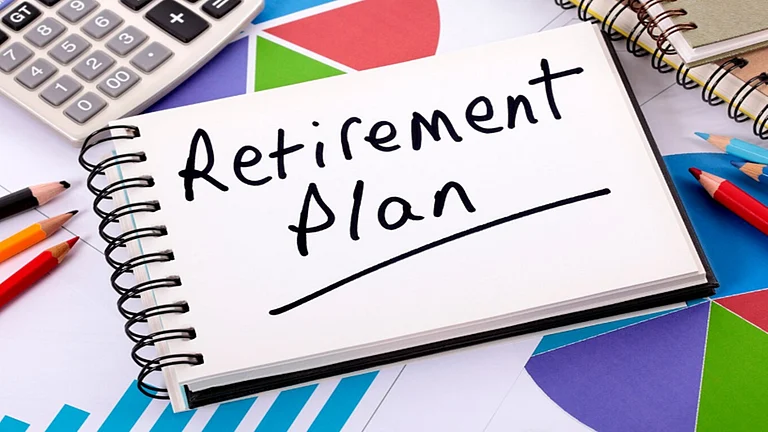
Summary of this article
Retirement should not be marked by financial anxiety, but by dignity and comfort. While EPFO can serve as a safety net, a truly secure retirement calls for a stronger harness—through additional products and investments.
Employees’ Provident Fund (EPF) serves as the first and often the only option available for millions of salaried employees in India. The scheme, administered by the Employees’ Provident Fund Organisation (EPFO), provides a mix of long-term savings along with retirement security, with contributions from both the employee and the employer, and the interest is credited annually.
EPF offers relatively high interest rates compared to fixed deposits and enjoys an EEE (Exempt-Exempt-Exempt) tax status along with a government guarantee, which makes it an ideal investment vehicle. Despite all these benefits, you should not solely rely on EPF for your post-retirement expenses. Here’s why.
1. Understanding What EPFO Offers
Under the EPF scheme, both the employee and the employer contribute 12 per cent of the employee’s basic salary and dearness allowance each month. These contributions, with time due to compounded interest, create a significant corpus for the EPF subscriber.
“Over the last decade, EPFO’s interest rates have stayed between 8 per cent and 9 per cent, making it one of the better fixed-income instruments. Additionally, the scheme through the Employees’ Deposit Linked Insurance (EDLI) scheme comes with an insurance component and through the Employees’ Pension Scheme (EPS) provides pension benefit as well,” says Abhishek Kumar, Founder, SahajMoney.
2. Why Depending Only On EPF Is Risky
It’s a risky strategy to depend entirely on EPF due to these factors:
A. Inflation Can Impact Real Returns
While EPF returns may look attractive in nominal terms, inflation reduces the buying power of your savings. For example, if EPF earns 8.25 per cent and inflation averages 6 per cent, your actual return is only about 2.25 per cent. The difference between inflation and EPF returns will lead to a substantial decline in your savings ability to purchase goods and services over extended periods.
B. Interest Rate Uncertainty
The government establishes yearly EPF interest rates which may change annually. The interest rates tend to drop when the economy faces downward pressure. In this scenario, the retirement corpus will develop at a slower pace compared to initial expectations.
C. Limited Equity Exposure
A large chunk of EPF investments remains debt instruments, with only up to 15 per cent invested in equities through ETFs.
“Although this provides safety of the principal amount, it also limits the growth potential of the corpus. Usually over a long period of time equity investments tend to outperform debt investments. So, not having sufficient equity exposure means that one may miss out on potentially higher returns,” says Kumar.
D. Career Breaks Reduce Contributions
If one takes a career break, works in the unorganised sector, or becomes self-employed, then one’s corpus size could get impacted due to irregular EPF contributions. It may not be possible for everyone to remain continuously employed, and hence they might not end up with a sizeable EPF corpus prior to retirement.
E. Changing Economic Situation
One may need one’s savings to last 25–30 years after retirement, as life expectancy is going up. Also, medical inflation is rising faster than general inflation, and hence EPF alone may not be enough to cover these future expenses.
3. How Much Return Can EPFO Really Provide?
If someone’s basic salary is Rs 50,000 per month, and both he and his employer contribute 12 per cent each (Rs 6,000 monthly from the employee, Rs 6,000 from the employer, keeping the EPS contribution aside), then the total monthly contribution would be Rs 12,000, and the annual contribution Rs 1,44,000. If one gets an 8 per cent interest rate per annum and contributes to EPF for 30 years, the end corpus would be approximately Rs 1.75 crore at retirement.
“While Rs 1.75 crore may seem like a substantial amount, at a 4 percent safe withdrawal rate, that translates to approximately Rs 7 lakh in the first year of retirement, or around Rs 60,000 per month. After factoring in inflation over 30 years, this amount may not provide the lifestyle or security one expects,” says Kumar.
4. Diversifying Investment For Retirement Corpus
Instead of solely relying on EPF, therefore, one should have a diversified investment portfolio with multiple asset classes:
A. Equity Mutual Funds
Equity mutual funds are an option to invest for long-term goals like retirement. Over a long investment horizon, diversified equity mutual funds can offer significantly higher returns than fixed-income instruments. One could build this over a period of time investing a small amount through SIPs (systematic investment plans).
B. National Pension System (NPS)
With a mix of equity and debt allocation along with tax benefits, NPS offers a low-cost way to invest for retirement while diversifying beyond EPF.
C. Public Provident Fund (PPF)
PPF, being government-backed, offers tax-free returns, making it ideal for conservative debt allocation. It complements EPF while providing flexibility for self-employed individuals who can’t subscribe to EPF through their employer.
5. Strategic Approach To Retirement Planning
This involves these steps:
Starting early: The sooner you start planning for retirement, the better it would be as you get more time for compounding to work in your favour.
Set a target corpus: Estimate the required retirement corpus that you would require after adjusting for future inflation.
Diversification: You should invest across different financial products such as EPF, PPF, NPS, equity and debt products, and other instruments to reduce concentration risk.
Review periodically: Adjust contributions across products and asset allocation as your career and goals evolve over a period of time.
Avoid early withdrawals: You should avoid EPF withdrawals before retirement. It should be used as a last resort to keep the compounding effect intact.
6. Bottom Line
“While EPFO remains a robust, safe, and tax-efficient retirement tool, it may not be sufficient for most people’s retirement needs. So, to prepare for the realities of rising costs, longer lifespans, and lifestyle aspirations, avoid depending solely on it for your retirement goals,” says Kumar.
EPF could act as a foundation of your retirement plan, but it must be supported by equity investments and voluntary retirement schemes like NPS.
Retirement should not be marked by financial anxiety, but by dignity and comfort. While EPFO can serve as a safety net, a truly secure retirement calls for a stronger harness—through additional products and investments.












